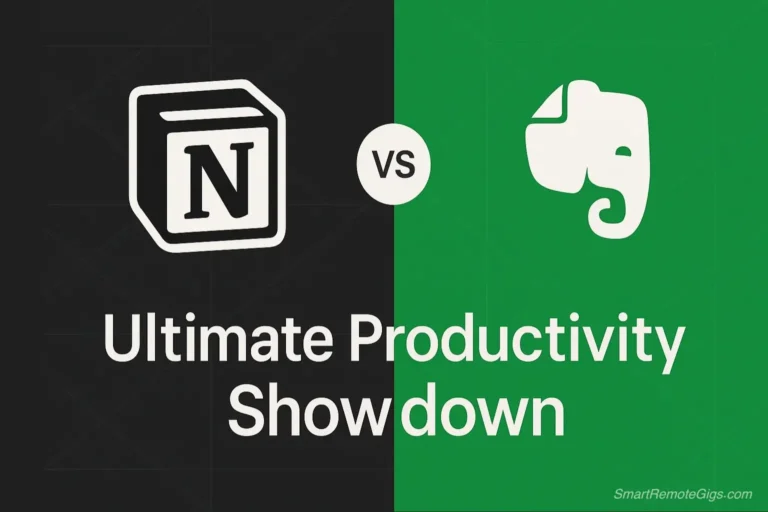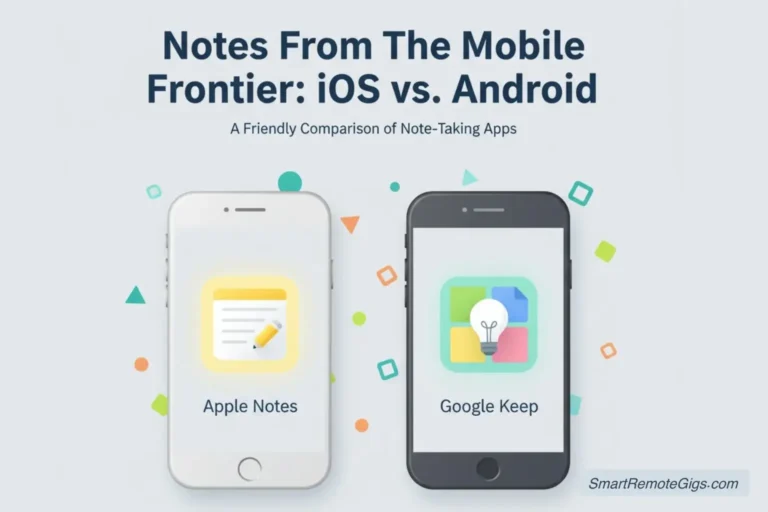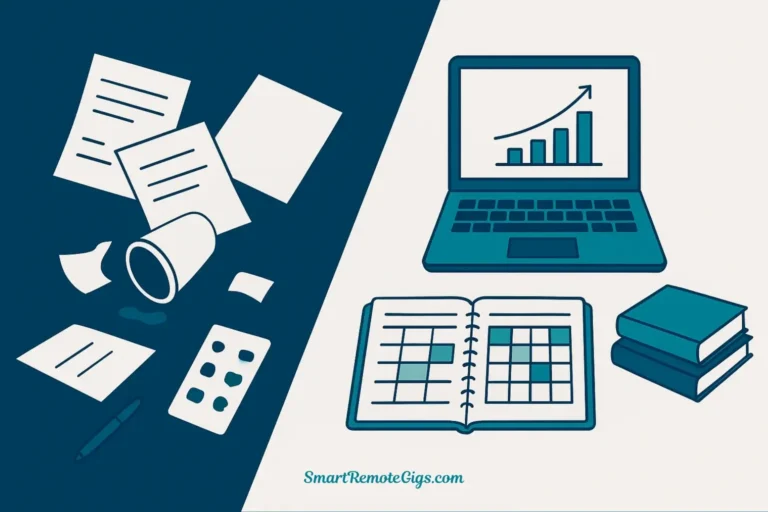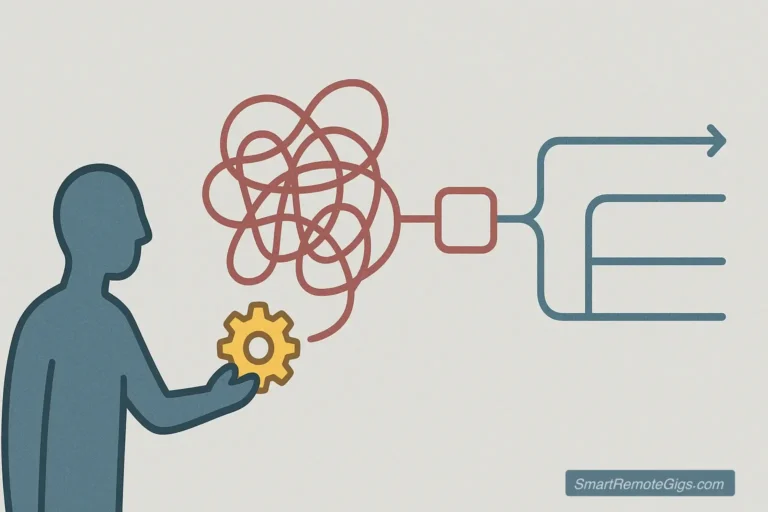You sit down to work, determined to be productive. Within minutes, your phone buzzes, your mind wanders, and suddenly you’re scrolling social media or reorganizing your desk for the third time today. Sound familiar? You’re not alone—studies show the average person checks their phone 96 times per day, and our attention spans have shrunk to just 8 seconds.
But what if there was a simple, scientifically-backed method that could transform your scattered focus into laser-sharp productivity? Enter the Pomodoro Technique—a time management method so effective that millions of professionals, students, and entrepreneurs swear by it.
In this comprehensive Pomodoro Technique guide, you’ll master the exact 5-step system that can help you eliminate distractions, beat procrastination, and accomplish more meaningful work in less time.
Quick Start Box: The 5-Step Pomodoro Method
Too busy to read the full guide? Here’s your instant action plan:
- Choose your task and break it into manageable chunks
- Set a timer for 25 minutes and work with complete focus
- Take a 5-minute break when the timer rings
- Repeat 3 more times, then take a 15-30 minute long break
- Track and adjust your sessions for continuous improvement
Ready to dive deeper? Keep reading for the complete mastery guide.
What Is the Pomodoro Technique? A Simple Definition
The Pomodoro Technique is a time management method that breaks work into focused 25-minute intervals called “pomodoros,” separated by short breaks. After completing four pomodoros, you take a longer break of 15-30 minutes.
This deceptively simple system was created in the late 1980s by Francesco Cirillo, an Italian university student who was struggling with focus and productivity. He grabbed a tomato-shaped kitchen timer (pomodoro means “tomato” in Italian), set it for 25 minutes, and challenged himself to study with complete concentration until it rang. That small experiment revolutionized not just his academic performance, but eventually became one of the world’s most popular productivity methods.
To learn more about the fascinating backstory, read our detailed article on Who Was Francesco Cirillo? Creator of the Pomodoro Technique.
The beauty of the Pomodoro method lies in its simplicity: anyone can start immediately with nothing more than a Pomodoro timer and a task to complete.
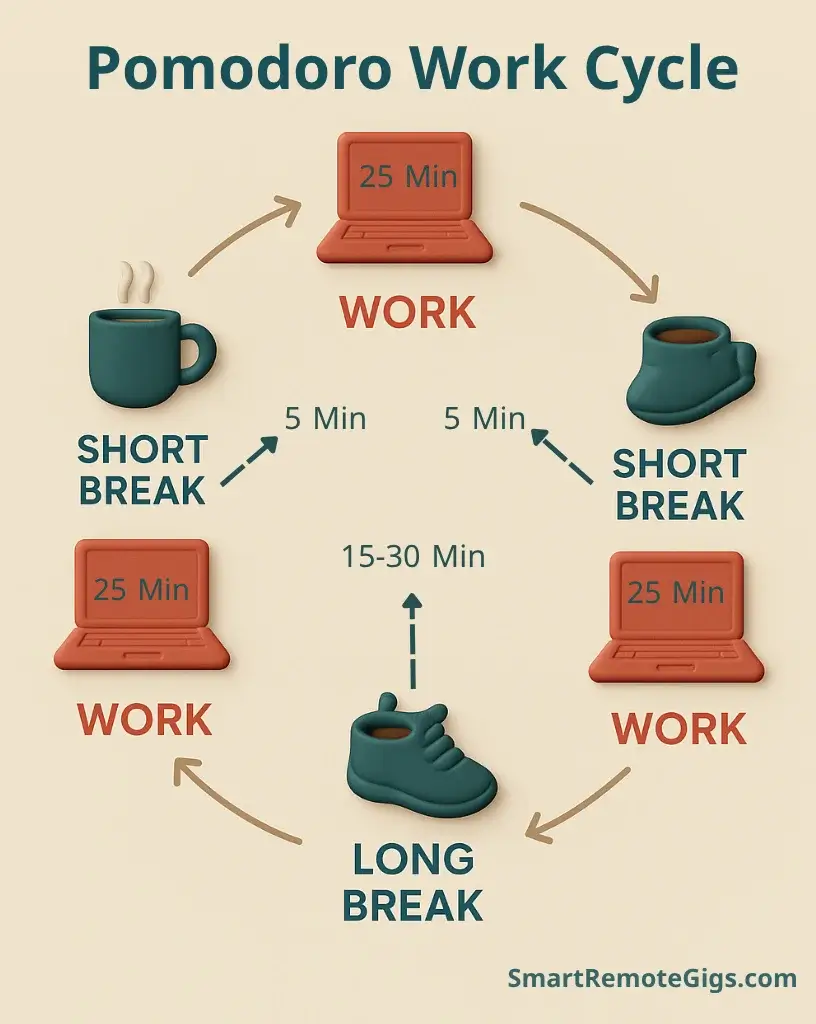
The Science Behind Why It Works

The Pomodoro Technique isn’t just a productivity hack—it’s grounded in solid psychological principles that address the root causes of distraction and procrastination. Understanding the science behind why it works will help you apply it more effectively and stick with it long-term.
Combats Procrastination with Low Commitment
One of the biggest barriers to starting any task is the overwhelming feeling that it will take “forever” to complete. Your brain, designed to conserve energy, naturally resists activities that seem difficult or time-consuming. This is where the psychological principle of “temporal discounting” comes into play—we tend to avoid tasks that require sustained effort over long periods.
The Pomodoro Technique brilliantly sidesteps this mental resistance by asking for just 25 minutes of commitment. Your brain can easily accept this small request because it knows there’s a clear endpoint. It’s the difference between being asked to “clean the entire house” versus “organize one drawer.” The same task becomes manageable when broken into smaller, time-bound chunks.
Research in behavioral psychology shows that once we start a task—even reluctantly—we’re much more likely to continue beyond our initial commitment. This is called the “Zeigarnik Effect,” where our brains create mental tension around unfinished tasks, naturally motivating us to complete them.
Improves Focus Through Timeboxing
The human brain performs best when it has clear boundaries and constraints. Without a deadline, work tends to expand to fill whatever time is available—a phenomenon known as Parkinson’s Law. A task that could take 30 minutes might stretch to 2 hours when there’s no time pressure.
The 25-minute pomodoro creates what psychologists call “beneficial constraint.” Knowing you have a limited window forces your brain to prioritize and focus on what matters most. It also triggers a mild stress response that actually enhances cognitive performance, similar to how athletes perform better in competitions than in practice.
Studies on attention and focus show that the average person can maintain peak concentration for 20-25 minutes before their attention begins to wane. The Pomodoro Technique aligns perfectly with these natural attention cycles, maximizing your cognitive resources when they’re strongest.
Prevents Burnout with Scheduled Breaks
Perhaps most importantly, the Pomodoro Technique recognizes that your brain needs regular rest to maintain peak performance. Neuroscience research reveals that during breaks, your brain doesn’t simply “turn off”—it enters what’s called the “default mode network,” where it consolidates information, makes connections, and prepares for the next focused session.
The scheduled breaks serve multiple psychological functions:
- They prevent mental fatigue that leads to errors and poor decisions
- They provide positive reinforcement, making the work feel more rewarding
- They allow your subconscious to process information and generate creative insights
- They reduce the stress hormone cortisol, which can impair memory and focus
This systematic approach to rest prevents the burnout and mental exhaustion that comes from trying to maintain focus for hours without breaks.
How to Use the Pomodoro Technique: The 5-Step Method
Now that you understand why the Pomodoro Technique works, let’s dive into the practical application. Follow these five steps exactly as outlined to maximize your results.

Step 1: Choose Your Task & Break It Down
Before starting any pomodoro, you need clarity about what you’re going to accomplish. Vague intentions like “work on project” or “study” are productivity killers because your brain doesn’t know what success looks like.
How to choose the right task:
- Select something specific and actionable (e.g., “write introduction paragraph” not “work on essay”)
- Ensure it can realistically be completed or significantly advanced in 25 minutes
- Choose work that requires focused attention, not mindless busy work
The breakdown strategy: If your task is large (like writing a report), break it into pomodoro-sized chunks:
- Research key points (1 pomodoro)
- Create outline (1 pomodoro)
- Write introduction (1 pomodoro)
- Write first main section (2 pomodoros)
- Edit and polish (1 pomodoro)
Write your specific task at the top of a piece of paper or digital document. This simple act of writing creates psychological commitment and helps maintain focus throughout the session.

Step 2: The 25-Minute Focused Sprint (The “Pomodoro”)
Set your timer for exactly 25 minutes and begin working on your chosen task with complete, undivided attention. This is your sacred focus time—treat it like a non-negotiable appointment with productivity.
Essential rules for your pomodoro:
- No checking email, social media, or unrelated websites
- No answering non-emergency phone calls or texts
- No switching to other tasks, even if they seem urgent
- No getting up for snacks, coffee, or bathroom breaks unless it’s an emergency
When distractions arise (and they will): Keep a piece of paper nearby labeled “Distractions.” When your mind wants to check something, research an idea, or remember to do something else, quickly jot it down and return to your task. This “capture and continue” method prevents you from losing good ideas while maintaining focus.
If you finish your task early: Don’t stop working! Use the remaining time to review, improve, or over-learn what you’ve accomplished. You might catch errors, add details, or prepare for the next task. The full 25 minutes is your commitment, regardless of when you feel “done.”

Step 3: The Essential 5-Minute Short Break
When your timer rings, stop working immediately—even if you’re in the middle of a sentence or on the verge of a breakthrough. This might feel counterintuitive, but respecting the break is crucial for long-term success with the technique.
What to do during your 5-minute break:
- Stand up and move your body (stretch, walk, do jumping jacks)
- Look away from your screen and focus on distant objects to rest your eyes
- Hydrate with water or a healthy beverage
- Practice deep breathing or brief mindfulness
- Use the bathroom or grab a healthy snack
What NOT to do during breaks:
- Check email or social media (this continues the mental stimulation)
- Start another work task (this defeats the purpose of rest)
- Engage in anything that requires focused attention
- Skip the break entirely (this leads to burnout)
Set a timer for your break too. Five minutes can feel shorter or longer than expected, and you want to return to work refreshed but not sluggish.

Step 4: Repeat the Cycle & Take a Long Break
After completing your break, immediately start your next pomodoro. Repeat this cycle three more times (work 25 minutes, break 5 minutes) for a total of four pomodoros.
After your fourth pomodoro, reward yourself with a long break of 15-30 minutes. This extended rest period allows your brain to fully recharge and consolidate the learning from your focused work sessions.
How to use your long break:
- Take a walk outside (natural light and movement boost cognitive function)
- Have a proper meal or substantial snack
- Do something completely different from your work
- Socialize with colleagues, friends, or family
- Practice meditation or relaxation techniques
- Engage in light physical exercise
The complete cycle looks like this: Pomodoro 1 (25 min) → Break (5 min) → Pomodoro 2 (25 min) → Break (5 min) → Pomodoro 3 (25 min) → Break (5 min) → Pomodoro 4 (25 min) → Long Break (15-30 min)
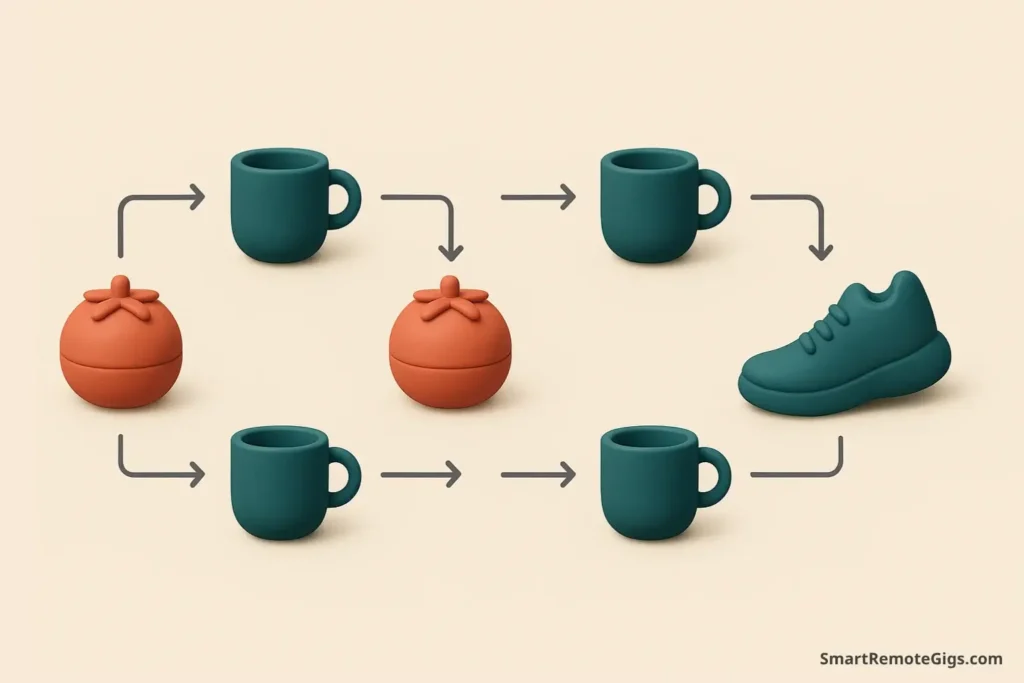

Step 5: Track, Review, and Adjust
The most successful Pomodoro practitioners don’t just work—they track their sessions and continuously improve their approach. This meta-level awareness transforms the technique from a simple timer method into a powerful productivity system.
What to track:
- How many pomodoros you completed each day
- Which tasks took more or fewer pomodoros than expected
- What types of distractions interrupted you most frequently
- Your energy and focus levels at different times of day
- Which tasks felt most and least engaging
Simple tracking methods:
- Keep a daily log with task names and completed pomodoros
- Use a simple tally system (✓ for completed, X for interrupted)
- Note your energy level (High/Medium/Low) after each session
- Track your most productive hours of the day
Weekly review questions:
- Which times of day am I most focused and productive?
- What types of tasks benefit most from the Pomodoro Technique?
- What are my most common sources of distraction, and how can I eliminate them?
- How can I better estimate how many pomodoros different tasks will require?
Use these insights to optimize your approach. You might discover you’re more focused in the morning, that certain types of work require longer or shorter intervals, or that specific environmental changes dramatically improve your focus.
Common Mistakes & How to Solve Them (Expert FAQ)
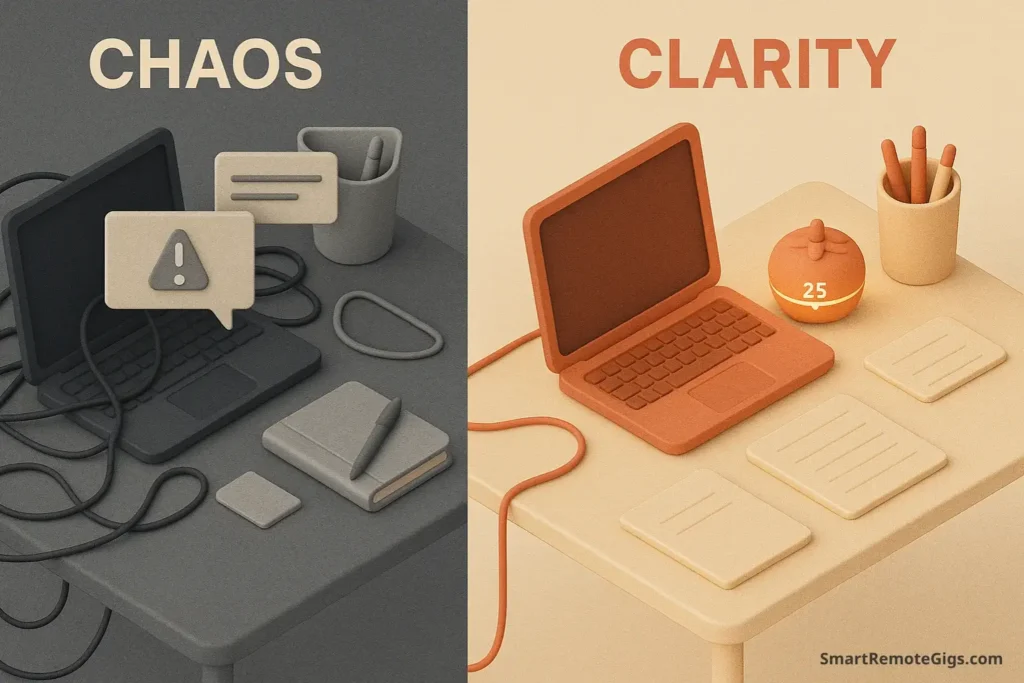
Even with clear instructions, most people encounter predictable challenges when starting with the Pomodoro Technique. Here are the most common problems and their proven solutions.
For a deeper dive into overcoming these challenges, check out our comprehensive guide on 5 Common Pomodoro Mistakes (And How to Fix Them Today).
Problem: “I get distracted during a Pomodoro.”
The Reality: Your mind will wander, notifications will ping, and colleagues will interrupt. This is normal, especially when you’re building new focus technique habits.
The Solution: The “Note and Postpone” Strategy
Keep a “Distraction List” next to your workspace. When your mind wants to check something, remember a task, or explore an interesting idea, write it down immediately and return to your current task. This external brain dump prevents you from losing good ideas while maintaining focus.
For external interruptions (phone calls, colleagues), use the “inform, negotiate, and callback” approach:
- Inform them you’re in a focused work session
- Negotiate a specific time to address their need
- Callback or follow up at the agreed time
Most interruptions aren’t as urgent as they initially seem, and people respect clear boundaries when communicated politely.
Problem: “I finish my task before the 25 minutes are up.”
The Reality: Sometimes you’ll complete your planned work with time remaining in your pomodoro. Your instinct might be to start something new or take an early break.
The Solution: The “Overlearning” Approach
Use the remaining time to deepen your work through:
- Review and polish: Look for errors, unclear sections, or improvement opportunities
- Prepare for next steps: Organize materials, create outlines, or plan your next pomodoro
- Connect and synthesize: Think about how this work relates to other projects or ideas
- Practice and reinforce: If learning new skills, use extra time for repetition and mastery
This approach ensures you extract maximum value from every pomodoro while building deeper expertise in your work.
Problem: “25 minutes feels too short/long for my work.”
The Reality: Different types of work and individual preferences may not align perfectly with the standard 25-minute interval.
The Solution: Thoughtful Customization
While 25 minutes works for most people and most tasks, you can experiment with modifications:
For work that needs longer focus:
- Try 50-minute sessions with 10-minute breaks (the “Ultradian Rhythm” approach)
- Use 25 minutes for planning and 50 minutes for deep execution
- Reserve longer sessions for creative work that requires extended mental immersion
For work that needs shorter intervals:
- Start with 15-minute pomodoros if 25 feels overwhelming
- Use 10-minute micro-sessions for overwhelming or anxiety-provoking tasks
- Gradually increase duration as your focus stamina improves
The key principle: Maintain the work-break rhythm regardless of timing. The alternating pattern of focus and rest is more important than the exact duration.
Advanced Pomodoro: From Beginner to Pro
Once you’ve mastered the basic Pomodoro method, these advanced strategies will help you extract even more value from your focused work sessions.
Combining Pomodoro with Other Productivity Systems
The Pomodoro Technique works exceptionally well when integrated with other productivity frameworks. For a complete guide on this integration, see our detailed article on Combining the Pomodoro Technique & Getting Things Done (GTD).
Pomodoro + Getting Things Done (GTD):
Use your GTD system to identify and prioritize tasks, then use pomodoros to execute them with focus. During your weekly review, estimate how many pomodoros different types of tasks typically require, making your planning more accurate.
Pomodoro + Eisenhower Matrix:
Apply the Pomodoro Technique primarily to “Important but Not Urgent” tasks (Quadrant 2). These activities—like skill development, strategic planning, and relationship building—benefit most from sustained, focused attention but are often neglected due to their lack of immediate pressure.
Pomodoro + Time Blocking:
Schedule specific pomodoro blocks in your calendar for different types of work. For example, reserve morning hours for creative work, afternoon for administrative tasks, and late afternoon for learning and development.
Using Pomodoro for Different Types of Work
Creative Work (Writing, Design, Problem-Solving):
- Use the first pomodoro for brainstorming and idea generation without judgment
- Dedicate subsequent pomodoros to refining and developing your best ideas
- Take longer breaks (10-15 minutes) to let your subconscious process creative challenges
- Consider “inspiration capturing” during breaks—keep a notebook handy for sudden insights
Administrative Tasks (Email, Data Entry, Organization):
- Batch similar tasks together within single pomodoros
- Use the time pressure to avoid perfectionism on routine tasks
- Set specific completion goals (e.g., “process 20 emails” rather than “work on email”)
- Use breaks to prevent mental fatigue from repetitive work
Learning and Study:
- Alternate between input (reading, listening) and output (note-taking, summarizing) pomodoros
- Use the “Feynman Technique” during breaks: explain what you learned in simple terms
- Schedule review pomodoros for previously learned material to strengthen retention
- Break complex subjects into discrete learning objectives for each session
For individuals with ADHD who may need specialized approaches, our guide on Pomodoro Technique & ADHD: A Guide to Improving Your Focus provides targeted strategies and modifications.
The Team Pomodoro: Group Focus Sessions
The Pomodoro Technique can be surprisingly effective for team productivity:
Meeting Pomodoros:
Structure meetings in 25-minute focused segments with 5-minute breaks. This prevents energy drops and keeps discussions sharp and purposeful.
Collaborative Work Sessions:
When working together on shared projects, synchronize your pomodoros. Everyone works in focused silence for 25 minutes, then discusses progress and next steps during the break.
Accountability Partnerships:
Partner with a colleague for mutual Pomodoro accountability. Share your daily goals and check in on each other’s progress, creating positive peer pressure and support.
The Best Pomodoro Tools & Apps (Curated for 2025)
While you can use any Pomodoro timer, specialized apps offer features that enhance the technique. For detailed reviews, feature comparisons, and pricing information, check out our comprehensive guide: The 7 Best Pomodoro Timer Apps (Free and Paid).
For Beginners:
- Forest: Gamifies focus by growing virtual trees during work sessions
- Be Focused: Simple, clean interface perfect for getting started
- PomoDone: Integrates with popular task management tools
For Advanced Users:
- Session: Comprehensive tracking with detailed analytics and insights
- Focus Keeper: Customizable intervals with beautiful design
- Toggl Track: Professional time tracking with Pomodoro functionality
For Teams:
- Focusmate: Virtual co-working sessions with accountability partners
- Cuckoo: Team-focused Pomodoro sessions with shared breaks
The key is starting with any timer rather than spending time finding the “perfect” app. A simple phone timer works just as well as sophisticated software for learning the fundamentals.
Download Your Free Pomodoro Planning Worksheet

Ready to put the Pomodoro Technique into practice? We’ve created a beautifully designed, one-page planning worksheet that includes:
- Daily task planning template with pomodoro estimates
- Distraction tracking sheet to identify your focus challenges
- Weekly review questions for continuous improvement
- Progress tracking charts to visualize your productivity growth
- Quick reference guide to the 5-step method
This printable PDF is designed to be your daily companion as you build your Pomodoro practice. Print multiple copies and use them to track your progress, identify patterns, and continuously refine your approach.
Conclusion: Start Your First Pomodoro Now
The Pomodoro Technique isn’t just another productivity hack—it’s a scientifically-backed method for reclaiming your focus in an increasingly distracted world. By working in focused 25-minute sprints followed by restorative breaks, you’ll accomplish more meaningful work while feeling less stressed and overwhelmed.
The beauty of this time management technique lies in its simplicity. You don’t need special software, extensive training, or major lifestyle changes. You just need a Pomodoro timer, a task, and the commitment to focused work for 25 minutes.
Your productivity transformation starts with a single pomodoro. Right now, choose one specific task you’ve been avoiding or struggling to complete. Set your timer for 25 minutes, eliminate distractions, and begin. When that timer rings, you’ll have taken the first step toward mastering your focus and accomplishing your most important work.
The question isn’t whether the Pomodoro Technique can help you—it’s whether you’re ready to help yourself by starting your first session today.
Your first pomodoro begins now. What will you accomplish?
This comprehensive guide will show you how to master the Pomodoro Technique, a 5-step system that can help you eliminate distractions, beat procrastination, and accomplish more meaningful work in less time.
Total Time: 2 hours
Choose Your Task & Break It Down

Before starting, get clear on what you want to accomplish. Choose a specific, actionable task. If it’s a large project, break it down into smaller, 25-minute chunks. Write down the specific task you’ll work on.
The 25-Minute Focused Sprint (The “Pomodoro”)

Set your timer for 25 minutes and work on your chosen task with complete, undivided attention. Avoid checking email, social media, or answering non-emergency calls. If a distraction arises, jot it down on your “Distraction List” and immediately return to your task.
The Essential 5-Minute Short Break

When the timer rings, stop working immediately. Take a 5-minute break away from your screen. Stand up, stretch, get some water, or do some deep breathing. Do not check email or start another work task.
Repeat the Cycle & Take a Long Break
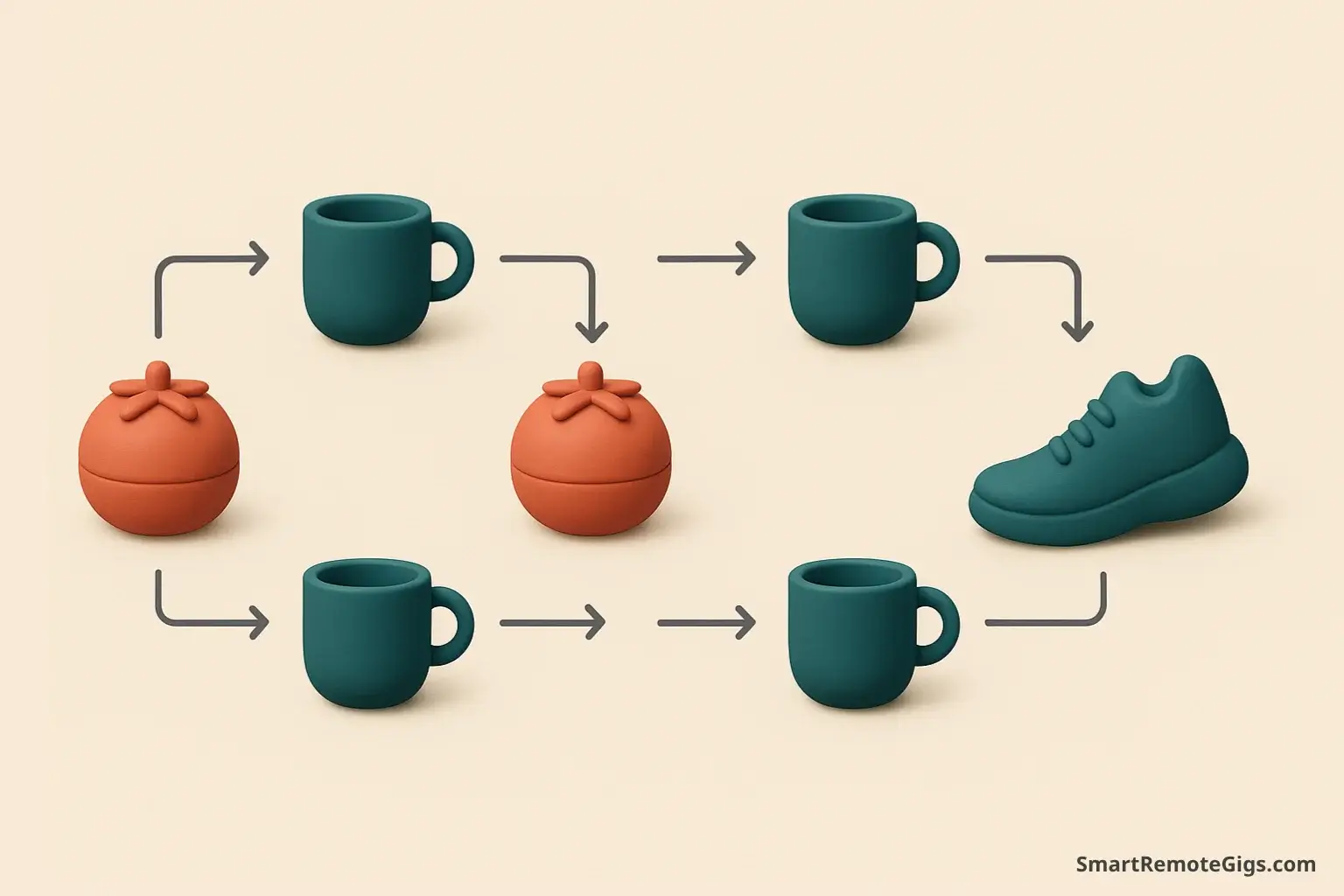
After your break, start the next 25-minute Pomodoro. Repeat this cycle three more times. After completing four Pomodoros in total, take a longer, restorative break of 15-30 minutes.
Track, Review, and Adjust

To turn this technique into a system, track your sessions. Note how many Pomodoros you complete each day and which tasks took more or less time than expected. Use these insights to improve your focus and planning.
Tools:
- A Pomodoro timer (physical or digital)
- A task list
- A "Distraction List" paper

